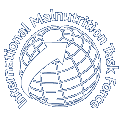How is Community-based Therapeutic Care (CTC) implemented?
The planning stage involves dialogue with target communities and local authorities to ensure sensitization and agreement on the aims and methods of the program, admission criteria and screening and location of distribution sites.
Initially, a Supplementary Feeding Programme (SFP) is established rapidly. An Outpatient Therapeutic Care (OTP) program is added to the SFP, and all severely acutely malnourished children enrolled in the OTP receive Ready-to-use-therapeutic-food (RUTF) and are treated using simple medical protocols on a routine basis. Children return weekly or, in some cases, every two weeks for monitoring. The OTP can be set up in a few days.
This is accompanied by increased community mobilization to increase participation and understanding of the program. In the middle stage, inpatient care is improved and strengthened within existing structures to provide individual care for malnourished children with complications. New Stabilisation Centres are established to provide inpatient care where no previous infrastructure exists only when absolutely necessary, and after basic SFP and OTP services are up and running.
The final stage of “full CTC” involves extensive use of volunteer community mobilizers working with employed outreach workers. These volunteers and outreach workers follow up malnourished children at home, provide support, encourage return of defaulters, and actively find new caes.
Adapted from “Community Therapeutic Care (CTC): A new approach to managing acute malnutrition in emergencies and beyond” by Caroline Grobler-Tanner and Steve Collins, FANTA, 2004
Is the Community-based approach cost-effective?
The CTC approach has high initial capital costs, which include recruiting and training mobile teams, transportation, instituting decentralized logistics for food, and mobilizing the population. However, once these are in place, the approach has the potential to treat large numbers of severely malnourished children with few additional capital or fixed costs.
In CTC the burden of costs falls more on the implementing agency and less on the program beneficiary. Traditional centre-based programs often incur significant costs for caregivers and families of enrolled children primarily because caregivers are removed from their families for up to a month, in order to stay with the child in the hospital (or Therapeutic Feeding Centre). Siblings of the malnourished child are often deprived of care for this period. Furthermore, the caregiver is unavailable to work in the fields or participate in other income-generating activites. The costs to beneficiaries and their communities are largely avoided in the CTC model.
Adapted from “Community Therapeutic Care (CTC): A new approach to managing acute malnutrition in emergencies and beyond” by Caroline Grobler-Tanner and Steve Collins, FANTA, 2004
